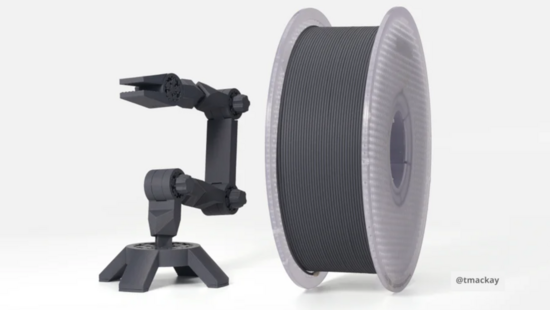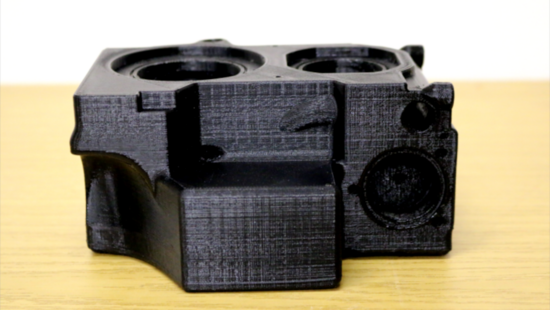
General Informations
PLA Carbon combines the advantageous properties of PLA with the high strength of a carbon-reinforced material. It is characterized by excellent printability, despite being brittle and sensitive to high temperatures. Despite these limitations, PLA Carbon is one of the preferred materials for 3D printing, especially for the production of large components. This is due to its low tendency to warp and its relatively low melting temperature.
The combination of PLA and carbon reinforcement allows overcoming the typical low strength of PLA. This is achieved because the carbon fibers can cleanly bond into layers. Consequently, components made from PLA Carbon are structurally robust and are well-suited for load-bearing applications as well as the manufacturing of large parts with high precision.
In addition to its strength, PLA Carbon exhibits high abrasion resistance and can shield against radio waves.
PLA Carbon 3D printing showcases multiple benefits, including outstanding print quality, suitability for large-scale projects with minimal warping, and resistance to environmental factors. However, it comes with some drawbacks, such as lower resolution in FDM printing, sensitivity to temperature variations, abrasiveness, and limited flexibility, which may not be ideal for applications requiring snap or click functionality.
Printing in PLA Carbon
Minimum Wall: 1 mm
Smalest Detail: 0.4 mm
Layer hight: 0.2mm
Max Print size: 256 x 256 x 256 mm
Tollerance: 0.2% min ±0.3 mm
Delivery Times: Typicaly 4-5 Businessdays
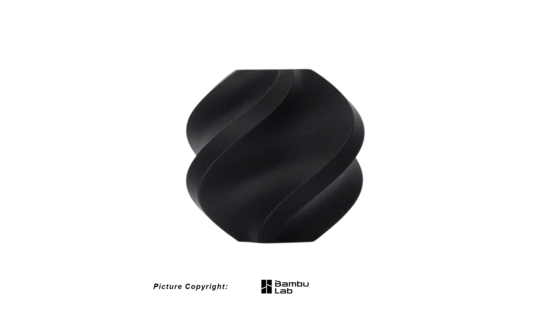
Pro`s and Con`s
Pro:
- Excellent Print Quality: PLA Carbon delivers high-quality printed parts.
- Minimal Warping: Suitable for crafting large components with reduced warping issues.
- Precise and Accurate: Achieves exceptional dimensional accuracy.
- Remarkably Rigid: Offers a substantial level of stiffness in printed parts.
- Improved Temperature Resistance: Exhibits better heat resistance compared to standard PLA.
- Abrasion Resistance: Possesses resistance against wear and tear.
- Weatherproof: Demonstrates resilience to outdoor environmental conditions.
Con:
- Reduced Resolution in FDM Printing: Notable drop in print resolution with FDM technology.
- Temperature Sensitivity: Prone to dimensional changes with fluctuations in temperature.
- Abrasive Nature: Can wear down printer components over time.
- Lack of Flexibility: Limited flexibility, unsuitable for snap or click mechanisms.
Applications of PLA Carbon 3D Print
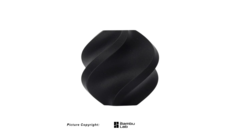
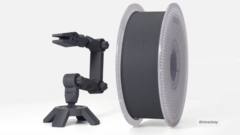
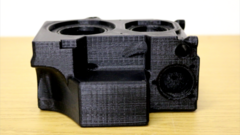
PLA Carbon 3D printing is highly versatile and suitable for various industries, including:
- Aerospace: Used in aerospace for lightweight yet robust components.
- Automotive: Ideal for producing parts requiring a balance of strength and weight.
- Consumer Electronics: Commonly used for casings and structural components.
- Prototyping: Widely employed in rapid prototyping for functional testing.
- Medical Devices: Suitable for crafting medical device prototypes and parts.
- Research: Applied in research projects needing strong, precise components.
- Biomedical Engineering: Used in biomedical applications requiring sturdy parts.
These applications leverage the clean printability and high strength of PLA Carbon, making it a preferred choice for a wide range of needs.
- Structural Components: PLA Carbon is well-suited for crafting structural elements like robust brackets and supports.
- Impact-Resistant Casings: Its durability makes it ideal for producing protective casings that can withstand impacts.
- Functional Parts: PLA Carbon is a reliable choice for manufacturing functional components used in various devices.
- Gripping Mechanisms: It can be utilized to create gripper mechanisms with enhanced rigidity and strength.
PLA Carbon 3D printing finds applications in producing structural components, impact-resistant casings, functional parts, and gripper mechanisms, thanks to its combination of high print quality and stiffness.
Technical specifications
General Properties
Property | Test Method | Value |
Density | ISO1183, GB/T1033 | 1.2 g/cm³ |
Melting Point | ISO 3146-C | 180-200°C |
Light Transmission | N/A | N/A |
Flame Resistance | N/A | N/A |
Moisture Absorption | 70%RH – 23°C | N/A |
Mechanical Properties
Property | Test Method | Value |
Elastic Modulus (X-Y) | ISO 527, GB/T 1040 | 7120 MPa |
Elastic Modulus (Z) | ISO 527, GB/T 1040 | N/A |
Tensile Strength (X-Y) | ISO 527, GB/T 1040 | 65 MPa |
Tensile Strength (Z) | ISO 527, GB/T 1040 | N/A |
Elongation at Break (X-Y) | ISO 527, GB/T 1040 | 2.5% |
Elongation at Break (Z) | ISO 527, GB/T 1040 | N/A |
Flexural Modulus (X-Y) | ISO 178, GB/T 9341 | N/A |
Flexural Modulus (Z) | ISO 178, GB/T 9341 | N/A |
Flexural Strength (X-Y) | ISO 178, GB/T 9341 | 58 MPa |
Flexural Strength (Z) | ISO 178, GB/T 9341 | N/A |
Impact Resistance (Charpy X-Y) | ISO 179, GB/T 1043 | 4.6 kJ/m² |
Thermal Properties
Property | Test Method | Value |
Glass Transition Temperature | DSC, 10°C/min | N/A |
Melting Temperature | DSC, 10°C/min | N/A |
Crystallization Temperature | DSC, 10°C/min | N/A |
Decomposition Temperature | TGA, 20°C/min | N/A |
Vicat Softening Temperature | ISO 306, GB/T 1633 | N/A |
Heat Deflection Temperature (1.8MPa) | ISO 75 | 115°C |
Heat Deflection Temperature (0.45MPa) | ISO 75 | N/A |
Thermal Conductivity | N/A | N/A |
Thermal Shrinkage | N/A | 0.2% |

